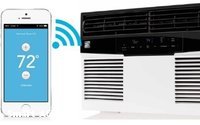 Some of the marketing of smart home appliances will be rather silent.
Some of the marketing of smart home appliances will be rather silent.
While consumers may not be driven to stores to check out or buy the latest smart appliances so they can
live on the leading edge, the appliances they buy may come with smarts, whether desired or not.
For example, at CES, the mega consumer electronics show in Las Vegas in January, Black &
Decker showed off its line of connected tools, which can be located via smartphone, where low-battery notices also are sent.
These IoT features come built-in to the tools. They are not smart
tools. They are tools that come with smarts built in.
That smarts, of course, involves being Internet-connected so that useful information can flow from device to consumer.
advertisement
advertisement
In
some cases, the people selling smart appliances may not necessarily have a heavy dose of IoT knowledge or even specific insight about smart or Internet-connected devices.
For example, I
recently visited the appliance department at a Best Buy. Here’s how it went:
“Do you have any smart appliances?”
“No.”
“Are you
sure?”
“Let me get someone who might know better.”
“Do you carry any smart appliances?”
“No, not in the store, but we can order
them.”
Of course, that Best Buy had an entire store section devoted to smart homes, including connected lighting and various other smart devices. But that was in a different department
than appliances.
Rather than working on convincing consumers that they need smart things, manufacturers and retailers are incorporating smarts or Internet-connectivity into the traditional
things they sell.
For example, Sears recently introduced a series of smart products, or, more accurately, products they already sold but now with new connectivity.
- The new smart
air conditioner and smart water heater can be controlled remotely from a smartphone.
- The Kenmore smart water softener system can be monitored remotely.
- The Craftsman riding mower
alerts the owner when it’s time for certain maintenance, like changing the oil.
The first stages of the revolution of the Internet of Things may actually start with the things
themselves rather than the consumer demand for smart things.
Rather than trying to persuade consumers to jump onto the IoT train, the initial marketing value may be in helping consumers
learn how to best use and leverage the wave of connected devices already coming into their lives, whether planned or not.